2013/10/17
リスク対策ドットコム英語版>記事
Mobile Apps, Disaster, Tools, Android Apps
AbstractA large variety of mobile applications (‘apps’) for disasters have been developed for sale or free download by agencies, NGO’s and individuals. This paper reviews a sample of a 100 Disaster related Apps and catagories the functions of these App’s into four areas: News & Alert Apps, Guides & Educational Apps, Tool Apps and finally Ethically Concerning Apps. The potential usefulness of App’s before, during and after a disaster is considered as well as the present technology limitations of App’s and the Smartphone platforms on which they operate. A framework of factors is then proposed for organisations to consider the value of developing their own App’s for Disaster.
IntroductionSmartphones are quickly replace basic mobile phones as preferred means of communication around the world. The annual growth rate of smartphone sales in 2012 was 45% and it is predicted there will be 1.4billion smartphones in use by the end of 2013 (Koetsier, 2013). One of the main features of a smartphone is it’s ability to run mobile applications, commonly referred to as mobile app’s. Mobile app’s are software programs designed to run on mobile device operating systems (adapted from Cambridge dictionaries definition*1). These app’s can be pre-installed into the smartphone though are most commonly downloaded enabling the mobile device user to tailor the device to their preference (Sung, 2011). Research by Nokia suggests games (38%), social networking (35%) and music (25%) are the most popular type of app’s download, while Social networking (31%), games (29%) and utilities (25%) are used the most (FabriQuate, 2011). As the number of mobile app’s being developed continues to rapidly grow so does the number of app’s developed in mind to assist people in disaster/emergencies. This study seeks to classify the types of disaster App’s available through their function and identify a framework of factors for consideration for organizations considering launching their own emergency app.
*1 http://dictionary.cambridge.org/dictionary/business-english/mobile-application
Mobile platformsAlthough Tablets are a growing mobile platform for mobile apps and app’s for car an area of potential new growth. This study focuses on mobile apps for mobile phone platforms as due to number and spread are more likely to be with a person in a disaster situation.
Smartphone operating systemsUnlike the PC operating system market which has been long dominated by Microsoft Window’s software, the mobile operating system sector is still an evolving market with multiply players still in contention to dominate the market. ). In terms of mobile app development this variety of platforms presents a challenge as Mobile app’s must be tailored to each operating system. A mobile app designed for Android would not function on IOS and visa versa meaning for maximum penetration of population a mobile app would need to be designed for at least at the top 2 platforms. Also functionality of app can vary on different mobile OS as for example Apple’s IOS restricts developers ability to run program software when the app is not activated making ‘push’ notification of alerts more difficult to implement than on Android. Interoperability is also an issue between version of OS with older versions of the same system unsupported and developers encourage to develop only for the latest version of OS leaving mobile owner no choice but to have to upgrade their phone to be able to use the latest app’s (Henneke, 2013) The prevalence of mobile operating systems can vary according to country/regional preference and generation within a population (Goodfellow, 2013). However the global trend data in figure 1 shows, gives Google’s Android Operating System the largest market share (60.3) then Apple’s IOS (22%) and then Blackberry RIM operating system (5.5%).
Figure 1: Gartner forecast of mobile device OS global market search Source: Forbes, 2013
As current market leader, mobile app’s designed for the Android OS were analyzed in this study.
App’s for DisasterFor the purpose of this paper App’s for disaster have been defined as ‘Mobile application targeted on use before, after or during a disaster’. A brief search on either android app store or itune app store reveals a variety of mobile app’s which fall within the definition that have been developed by organizations, companies and individuals. No research seems to have been done on the effectiveness of Mobile apps in Disaster, although there are papers cite the benefits of creating them (Sung 2011 and Hosmann et al 2011). Furthermore in the medical field workshops raising awareness of the use of disaster app’s have been developed for medical first responders (Levett ,2013)
Two prior studies examining Mobile app utility for disaster were found during the literature search.
Sung (2011) examined the use of mobile app for disaster communications in Taiwan and generalized 5 areas where app’s may be of benefit to users:
• Alert Notification - mostly considered SMS • Location sensing and Hazard map – identify location for rescue/evacuation • Disaster message board – For contact relatives • Follow-up – donation and news apps • Education
Sung cites only a few mobile app’s directly in his study, limiting the ability to replicate his approach and conclude that app’s could offer a variety of tailored benefits to users they lack evaluation in real implementation. Chen (2012) looked at use of mobile apps for Humanitarian Aid Disaster Relief (HADR) using a system engineering approach first identifying problems faced by relief organizations and how app’s could address them (Figure 2)
Chen’s study also identified several app’s that were considered of potential use in HADR however when these app’s were reviewed in this study 2 were still only in a concept stage (Where’s safe, Height Catcher) and others were not open access to nonrelief workers. The only app mentioned in Chen’s study that was available on Google play for general use was ReUnite which at the time of this study had received no rating/review which reviewed in the discussion section of this research.
Methodology:A sample of 100 App’s targeted at Disasters/Emergency from the official android app store*2. The sample app’s were found through web searches on Top app’s for disaster articles*3, keyword searches on Google play app store for ‘Disaster’ ‘ Emergency’ ‘Earthquake’ and app’s identified in the literature search. Figure 3 show the top listing of a search using the word ‘Disaster’ of Android App’s. Note the search capabilities of Google play at the time of this study did not allow sorting by popularity/ number of downloads.
Figure 3: Snap shot of some of the search for ‘disaster’ apps on Google play 10th August 2013
*2
https://play.google.com/store/apps*3
http://finance.yahoo.com/news/5-must-disaster-apps-153300981.html, http://www.moweble.com/six-useful-apps-for-disaster-management.htmlFor each mobile app the following details were recorded 1. App Name 2. Creator 3. Main function 4. Secondary functions 5. Price 6. Google play user rating and number of reviews 7. URL Web Link to location
The App name, creator and price details were taken from the initial info box (Figure 4) and the main function and secondary function were derived from the ‘Description’ section (Figure 5) and the rating from the review section (Figure 6). The URL was taken from the browsers address.
Figure 4: App intro box on Google play
Figure 5: App Description info on Google play
Figure 6: App review info on Google play
Results:Appendix 1: provides a full list of the data obtained from the data collation. Figure 7 shows an overview of the variety of app’s categorized by functions.
Figure 7: App’s utility categorized by function
From categorizing the utility of app’s by functions an interesting picture emerges of the variety of disaster app ideas to fulfill needs before after and during a disaster. Some app span several functions such as the Red Cross Tornado app that has Alert, Education and Tool elements. The final column category is used for app’s that could be misleading such as the ‘2012 Alert’ which base warning on religious, superstitious and astrological observations and ‘Nuclear Radiation Dosim’ which pertains to turn a mobile into a radiation monitoring device with not external sensor attachment requirements. Further app’s that might come into this category are disaster betting app’s enabling user to bet on a disaster occurring in a certain region/time period which although seem not to be present on Androids Google play app store were seen by the author in a cursory review of iPhone App’s. The US military has it’s own App store (Chen, 2012) to ensure the robustness of app’s used by it’s personnel, although this exact option is not feasible for most organization, they could develop lists of app’s they deem as potential useful in a disaster.
Discussion:When collating the data for the study limitations were found in the Google play App store information provided.
Problems with Google play rating / reviews. Although data was collected on the App’s user rating and number of reviews, the nature of the data made it difficult to comparatively rate. The Android app platform does not provide data on when the app was first launched only on when it was last updated. This presents a problem as app’s will accumulate ratings over time. Furthermore poor ratings may have been given to earlier versions of the app that have subsequently been fixed through updates yet remain weighed into the current rating/figures. Also visibility of all the reviews appears to be optional to the App owner or time limited. For example Softbanks disaster message board received 221 reviews yet only 2 are visible – this restrict analysis potential of app reviews. However from the reviews visible, common issues seemed to cause poor reviews:
1. Not installing onto certain phones – Although the operating system is the same interoperability between hardware can still present issues for developers
2. Problems with OS update compatibility – Update to OS affecting function/performance.
3. Data source format changes impact performance – A change to USGS data affected several earthquake app’s.
4. Reduce Battery life – Alert app’s which are constantly running on the phone drain battery time for users.
5. Loading problems – Large app’s require a lot of processing time to load and run on some mobile devices.
6. Data not relevant to person location – Some App’s in attempting to provide global coverage disappoint users in not being able to filter data to users preferred location(s) or app did not specify in description that data was only available in only certain regions.
7. Hidden subscription/login requirement - App’s although downloaded for free had a subscription element for update/alerts or requires user to login to a system.
The first three of these concerns fit within Chen (2012) Benefit and trade off analysis of mobile app’s in terms of Lifecycle management. App’s once deployed need maintenance to contend with software and hardware evolution. This maintenance cost must be considered in the initial cost-benefit analysis of an app launch. The 4th, 5th and 6th problem identified relate to the challenges identified by Kanjo et al (2009) in developing mobile app’s capabilities in terms of Power management, and scalability. The 7th issues is a combination of the distrust of being misled into paying for something that was purported to be free or potentially being asked in the future to pay to service.
Zombie app’s?There were four app’s found with no rating and no review, a sign commonly associated with ‘zombie app’s which are app’s rarely downloaded or used.
• Japan disaster relief (a donation site) • ReUnite – for post missing person info on US system • Yesterday we had a hurricane (children’s book update march 2013) • Disaster Survival (Disaster management plan info- update June 2013)
The data available on the Google play website suggested possibly both the children’s book and the ‘disaster survival’ app where only launched this year (both being version one and only have first released on their news update). The Japan disaster relief app was last updated March 15 2011, (4 days after the March 11th Great eastern Japan earthquake) the lack of downloads may have been due to concerns over scamming donations (Computerweekly, 2011). The case of the Reunite app receiving no ratings or reviews seems most curious as it is both recommended in top app’s for disaster articles and seen as useful to relief workers (Chen 2012 and Levett 2013). Is perhaps the preference is for users to download the app from the National Library of Medicines website or it is poorly advertised or only recently available from Google play there is little information on the Google play store to provide a conclusion. If the definition of Zombie app’s is extended to include apps with less than 3 reviews (assuming an unscrupulous developer has just reviewed the app themselves or asked a couple of friends to leave a review) a further 10 app’s could be seen as dubious.
App pricingOf the 100 app’s reviewed, only eight required payment for download. These were predominately ICE medical data storage app’s and disaster guides. The most expensive app was £2.99 for an ICE app that had received the most ratings of the In Case of Emergency medical data style apps reviewed. Perhaps users preferred to pay for the service of storing their personal medical data as it suggests the organization would not attempt to derive profit from selling the data on to third parties.
Disaster App’s vs Normal social media channelsCan mobile application targeted on use before, after or during a disaster provide benefit beyond that currently available through social media? Meier (2013) considered if app’s could compete with Twitter and concluded that while app’s could solicit data from users in desired formats their reach in terms of users would always be less than popular social media platforms. If the target users of the app is not the population in general but is specific ie, customers of an insurance firm, members of a NGO or medical practitioners then an app may be better suited for information exchange. This targeted nature of app’s also potentially applies to app’s targeted at the city or regional level however as the target becomes larger to the national and international the possibility of keeping information relevant to the users to maintain their interest becomes more challenging.
Factors identified during the course of this study that an Organizations considering launching disaster app’s should consider are:
1. Cost of app development and launchDevelopment cost and promotion cost of launch of mobile app.
2. Cost life cycle maintenanceCosts on maintaining app’s through OS update’s, new hardware development and response to poor reviewers.
3. Security of data provided and/or storedEnsure data provided to users for emergency use is accurate and incorruptible and that personal data stored on users is done in accordance with privacy law of targeted countries regulation and best practice.
4. Target Users for appIs the app for global use or for specific users such as relief workers. Which OS should the app be designed for to reach these users? This decision may need revisiting if market conditions change and a new mobile OS market leader emerges.
5. Core purpose of mobile appWhat is the main purpose of the app? How will this impact the size and operation of the app (does it need to carry a lot of data for offline operation, or does it need internet connectivity to run)
6. Value added nature of app over existing app’sWhat does the app offer in comparison to similar app’s on the market? What can be learnt from user feedback from these existing app’s?
7. Data InteroperabilityShih et al (2013) identified the siloed nature of mobile app data as a limitation to the wider social good of open collation of data for emergency management. If the app collects data should it be linkable to other data sources?
ConclusionThis paper reviewed a sample of a 100 Disaster related Apps designed for the Android Operating system and available from the official Google Play Android App store. These app’s were then categories the into four core functional areas: News & Alert Apps, Guides & Educational Apps, Tool Apps and finally Ethically Concerning Apps to show the wealth of ideas currently in the public domain targeted at assisting users before, during and after a disaster. Review information available on the apps was then considered and seven areas of frequent criticisms identified:
1. Not installing onto certain phones 2. Problems with OS update compatibility 3. Data source format changes impact performance 4. Reduce Battery life 5. App loading problems 6. Data not relevant to person location 7. Hidden subscription/login requirement
Furthermore seven factors were seen as key for organizations to consider when evaluating the need for a disaster app:
1. Cost of app development and launch 2. Cost life cycle maintenance 3. Security of data provided and/or stored 4. Target Users for app 5. Core purpose of mobile app 6. Value added nature of app over existing app’s 7. Data Interoperability
Extension of this research would be to examine the disaster app’s available on IOS to see if there are different app ideas that have been developed to address before, after and during disaster needs. Furthermore the iTune store may offer better analytics on app downloads, usage and reviews that can be used to enhance and compare the present analysis to define a user centric approach to disaster app evaluation.
To quantify the assertion of the targeting value of app’s made in this paper further research evaluating the city vs regional vs national approach to targeted app’s could be of great value to regional/national emergency agencies looking to establish the case for/against mobile app development.
From the wide variety of utilities seen during the collation of data on disaster app’s it does seem that the phrase ‘an app for everything’ fittingly applies, however the question on if they can save lives depends very much on the capabilities of the app to provide it’s essential function in a crisis and/or up-to-date and relevant information to it’s user.
References: Al-akkad, A and Zimmermann A. (2011) User Study: involving civilian by smart phones during emergency situations. Proceedings of the 8th International ISCRAM Conference – Lisbon, Portugal, May, 2011 Chan, Wen Kai (2012), Operational effectiveness of smartphones and app’s for Humanitarian Aid and Disaster Relief (HADR) operations – a systems Engineering study. Naval postgraduate school, Monterey, California. September 2012 Available at http://www.hsdl.org/?view&did=725983 Accessed 14th August 2013 Computerweekly, (2011) Scammers use Japan earthquake for charity donations fraud. Computerweekly online news, 15th March 2011. Available at http://www.computerweekly.com/news/1280095437/Scammers-use-Japanese-earthquake-forcharity-donation-fraud Accessed 14th August 2013 FabriQuate 2011, What type of app’s are most popular. Blog, available online http://www.fabriqate.com/what-types-of-apps-are-the-most-popular/ Accessed 14th August 2013 Forbes (2013) 2013 Roundup of smartphone and tablet forecasts & market estimate. Forbes 17/01/2013. Available online http://www.forbes.com/sites/louiscolumbus/2013/01/17/2013roundup-of-mobility-forecasts-and-market-estimate Accessed 14th August 2013 Goodfellow, P (2013) Although Andriod continues to climb, millennial are looking to Apple. Forbes 25th March 2013. Available online http://www.forbes.com/sites/prospernow/2013/04/25/though-android-continues-to-climbmillennials-are-looking-to-apple/ Accessed 14th August 2013 Hennecke, C (2013) Andriod vs IOS: comparing the development process of the GQueues Mobile Apps. Blog, Available online http://blog.gqueues.com/2013/07/android-vs-ioscomparing-development.html Accessed 14th August 2013 Hosmann, T. Legendre, F. Carta, Paolo (2011) Twitter in Disaster Mode: Opportunistic Communication and Distribution of Sensor Data in Emergencies. Conference paper, ExtremeCom2011 Hickey, S. (2012) 2012 Prediction Number of mobile Apps Increase by factor of 10. APM digest. 5th Jan 2012. Available online http://apmdigest.com/2012-prediction-number-ofmobile-apps-increases-by-factor-of-10 Accessed 14th August 2013 Kanjo, E., Bacon, J., Roberts, D. & Landshoff, P. (2009) MobSens: Making Smart Phones Smarter, IEEE Pervasive Computing, 8, 50-57. Available online http://www.academia.edu/1192392/Mobsens_Making_smart_phones_smarter Accessed 14th August 2013 Koetsier, J (2013) 800 million Andriod smartphones, 300 million IPhones in active use by 2013, study says. Venture beat mobile blog, Available online http://venturebeat.com/2013/02/06/800-million-android-smartphones-300-million-iphones-inactive-use-by-december-2013-study-says/ Accessed 14th August 2013 Levett, Paul (2013), Smartphone apps for disaster: workshop lesson plan. Himmelfarb health science library, the George Washington university, Health Science research commons. Available online http://hsrc.himmelfarb.gwu.edu/cgi/viewcontent.cgi?article=1065&context=libfacpres Accesed 14th August 2013 Marralle, A. Mecella, M. and Russo, A. (2011) Collaboration on-the-field: suggestions and beyond. Proceedings of 8th International ISCRAM conference Meier, P (2013) Can official disaster response App’s compete with Twitter? iRevolution blog Available online http://irevolution.net/2013/08/13/can-official-disaster-response-appscompete-with-twitter/ Accessed 14th August 2013 Shih et al 2013, Fuming Shih, Oshani Seneviratne, Daniela Miao, Ilaria Liccardi, Lalana kagal, Democratizing Mobile App development for disaster management. MIT, Cambridge USA IJCAI Semantic Cities. Available online (PDF) Accessed 14th August 2013 Sung, Sz Jie (2011) How can we use mobile apps for disaster communications in Taiwan: problems and possible practice. 8th international Telecommunication Society (ITS) AsiaPacific regional conference, Taiwan, 26-28 June 2011 : Convergence in the digital age. Available online https://www.econstor.eu/dspace/bitstream/10419/52323/1/67297973X.pdf Accessed 14th August 2013 Appendix 1 The data file of app’s reviewed in Excel spreadsheet format, if not included with this paper is available from the author on request to Samantha.ueno@gmail.com
◆Profile Samantha Ridler Ueno is an Mphil Graduate of Technology policy at The Universityof Cambridge. Her background is in Electronic Engineering and consulting. Samantha lived for 5years in Japan and experienced the March 11th 2011 Great Eastern Japan earthquake with her family. Samantha writes artcles on BCP and disaster communication for "Risk Taisaku.com" a Japan’s leading BCP and Risk management publication. Samantha is a student member of TIEMS (The International Emergency Management Society) and run’s the TIEMS_ORG twitter feeds during conference and assisting in social media promotion of TIEMS events.
リスク対策ドットコム英語版>記事の他の記事
- An ‘App’ for everything; But can Apps for Disaster save lives?
- Once upon a time in Fukushima
- UK experience of the Impact of Volcanic Eruptions
- BS25999 Certification Is No Guarantee of a Robust, Fit-for-purpose Business Continuity Capability
- A need to re-think the trade-off between continuity and productivity
おすすめ記事
-
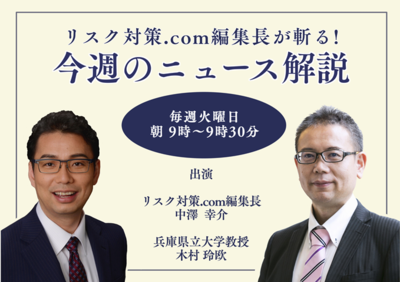
リスク対策.com編集長が斬る!今週のニュース解説
毎週火曜日(平日のみ)朝9時~、リスク対策.com編集長 中澤幸介と兵庫県立大学教授 木村玲欧氏(心理学・危機管理学)が今週注目のニュースを短く、わかりやすく解説します。
2025/04/01
-
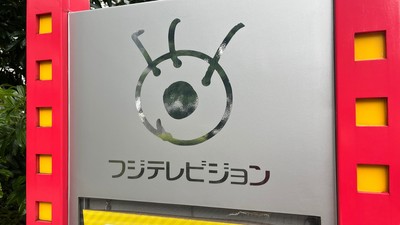
-
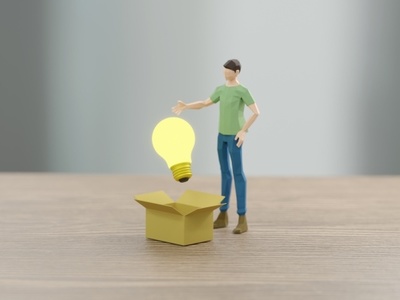
-

-
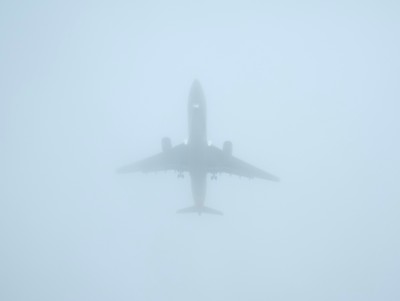
-
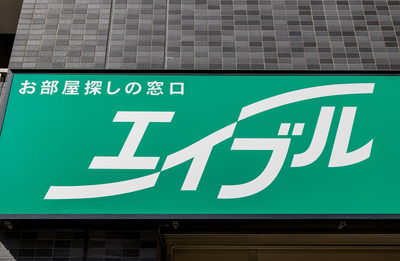
全社員が「リスクオーナー」リーダーに実践教育
エイブルホールディングス(東京都港区、平田竜史代表取締役社長)は、組織的なリスクマネジメント文化を育むために、土台となる組織風土の構築を進める。全役職員をリスクオーナーに位置づけてリスクマネジメントの自覚を高め、多彩な研修で役職に合致したレベルアップを目指す。
2025/03/18
-
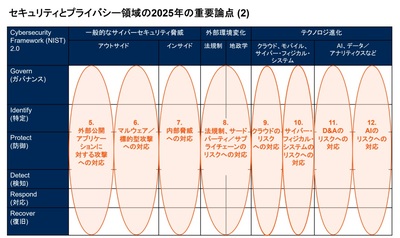
ソリューションを提示しても経営には響かない
企業を取り巻くデジタルリスクはますます多様化。サイバー攻撃や内部からの情報漏えいのような従来型リスクが進展の様相を見せる一方で、生成 AI のような最新テクノロジーの登場や、国際政治の再編による世界的なパワーバランスの変動への対応が求められている。2025 年のデジタルリスク管理における重要ポイントはどこか。ガートナージャパンでセキュリティーとプライバシー領域の調査、分析を担当する礒田優一氏に聞いた。
2025/03/17
-
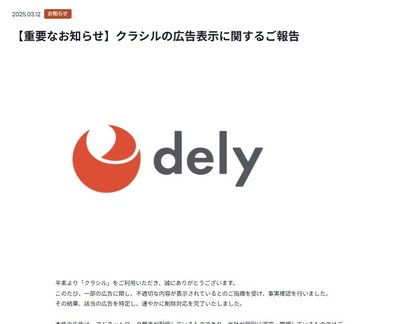
-

-

なぜ下請法の勧告が急増しているのか?公取委が注視する金型の無料保管と下請代金の減額
2024年度は下請法の勧告件数が17件と、直近10年で最多を昨年に続き更新している。急増しているのが金型の保管に関する勧告だ。大手ポンプメーカーの荏原製作所、自動車メーカーのトヨタや日産の子会社などへの勧告が相次いだ。また、家電量販店のビックカメラは支払代金の不当な減額で、出版ではKADOKAWAが買いたたきで勧告を受けた。なぜ、下請法による勧告が増えているのか。独占禁止法と下請法に詳しい日比谷総合法律事務所の多田敏明弁護士に聞いた。
2025/03/14




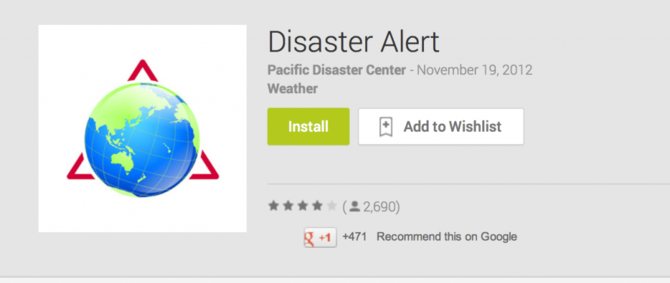
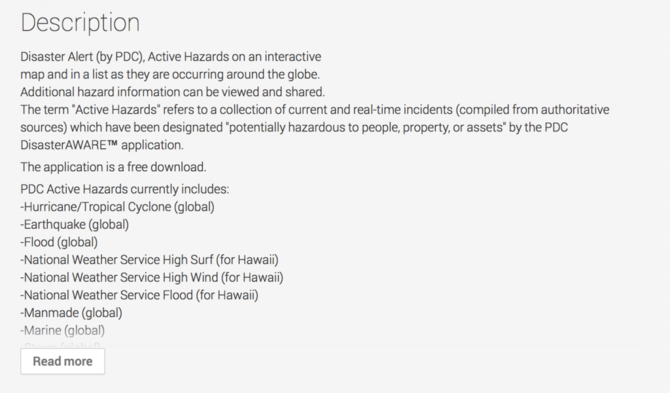
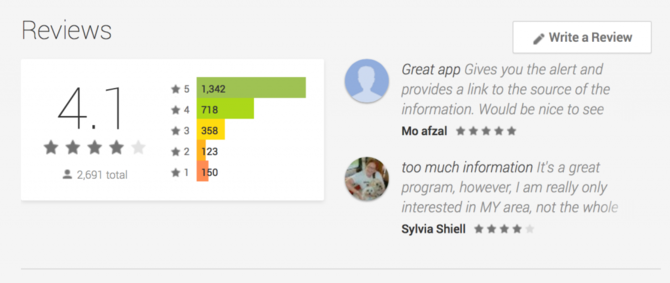







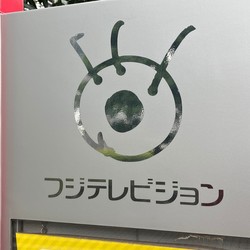




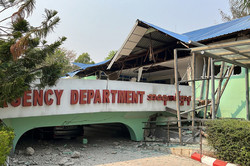
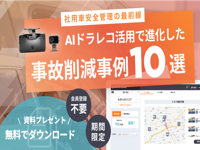
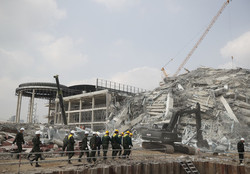
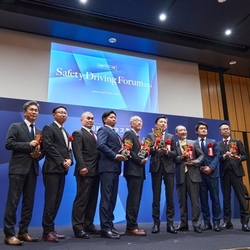
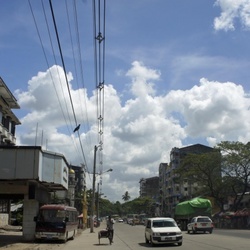

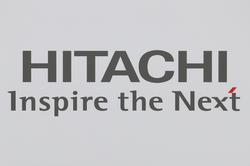



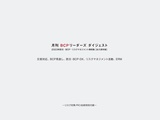
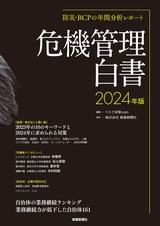
![2022年下半期リスクマネジメント・BCP事例集[永久保存版]](https://risk.ismcdn.jp/mwimgs/8/2/160wm/img_8265ba4dd7d348cb1445778f13da5c6a149038.png)
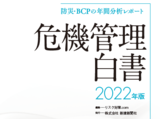



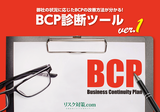
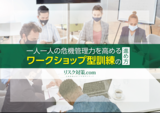
※スパム投稿防止のためコメントは編集部の承認制となっておりますが、いただいたコメントは原則、すべて掲載いたします。
※個人情報は入力しないようご注意ください。
» パスワードをお忘れの方